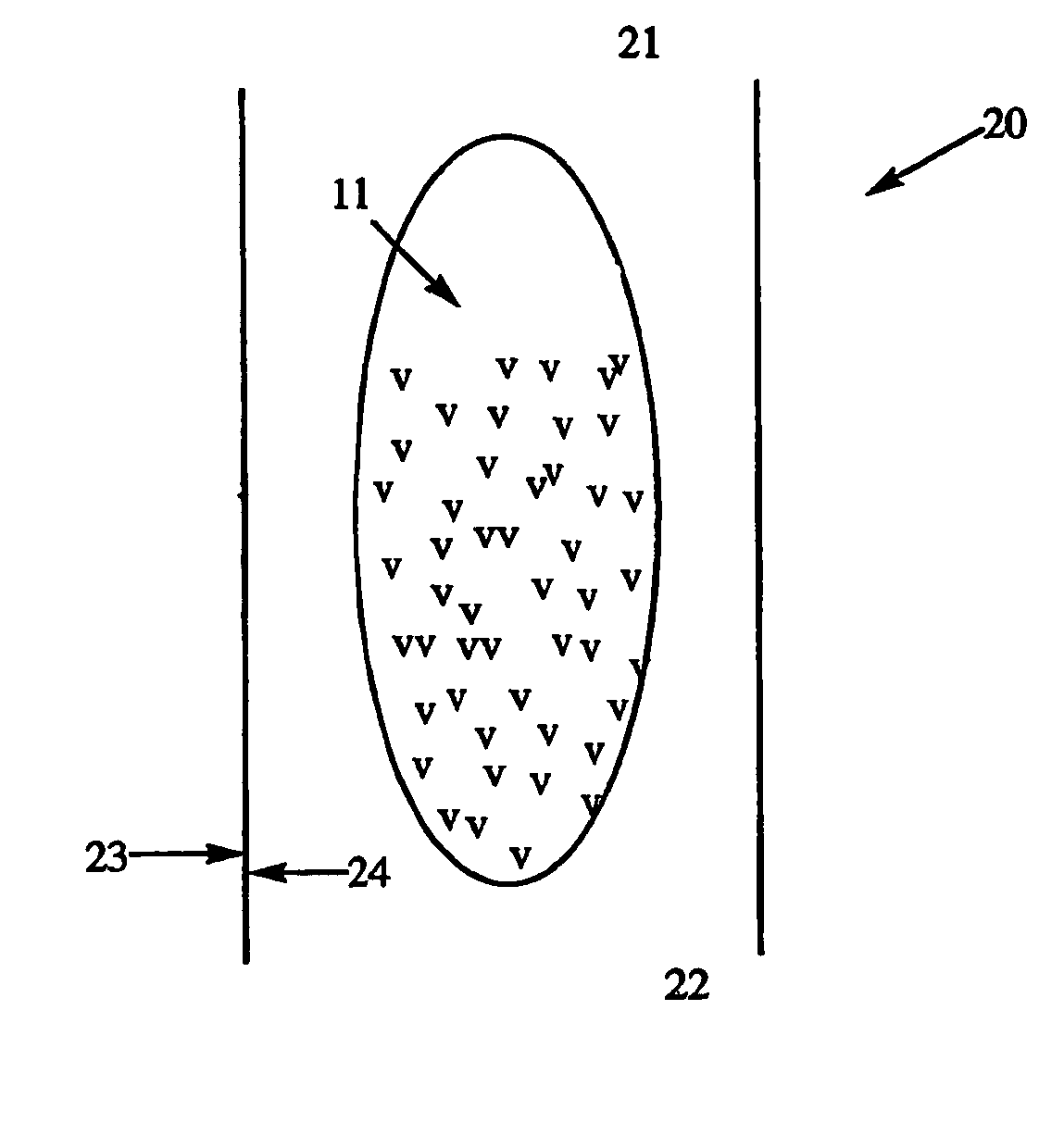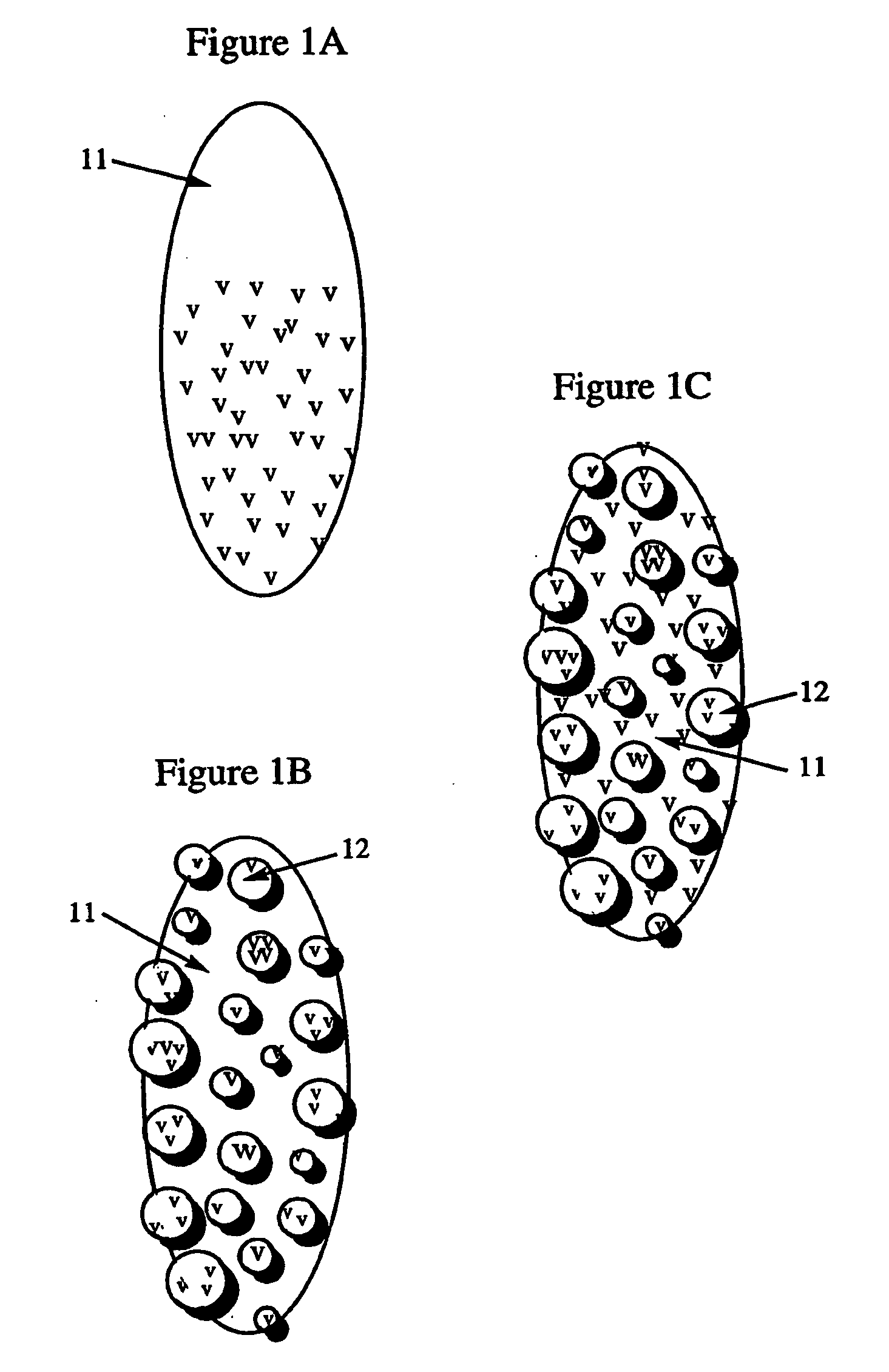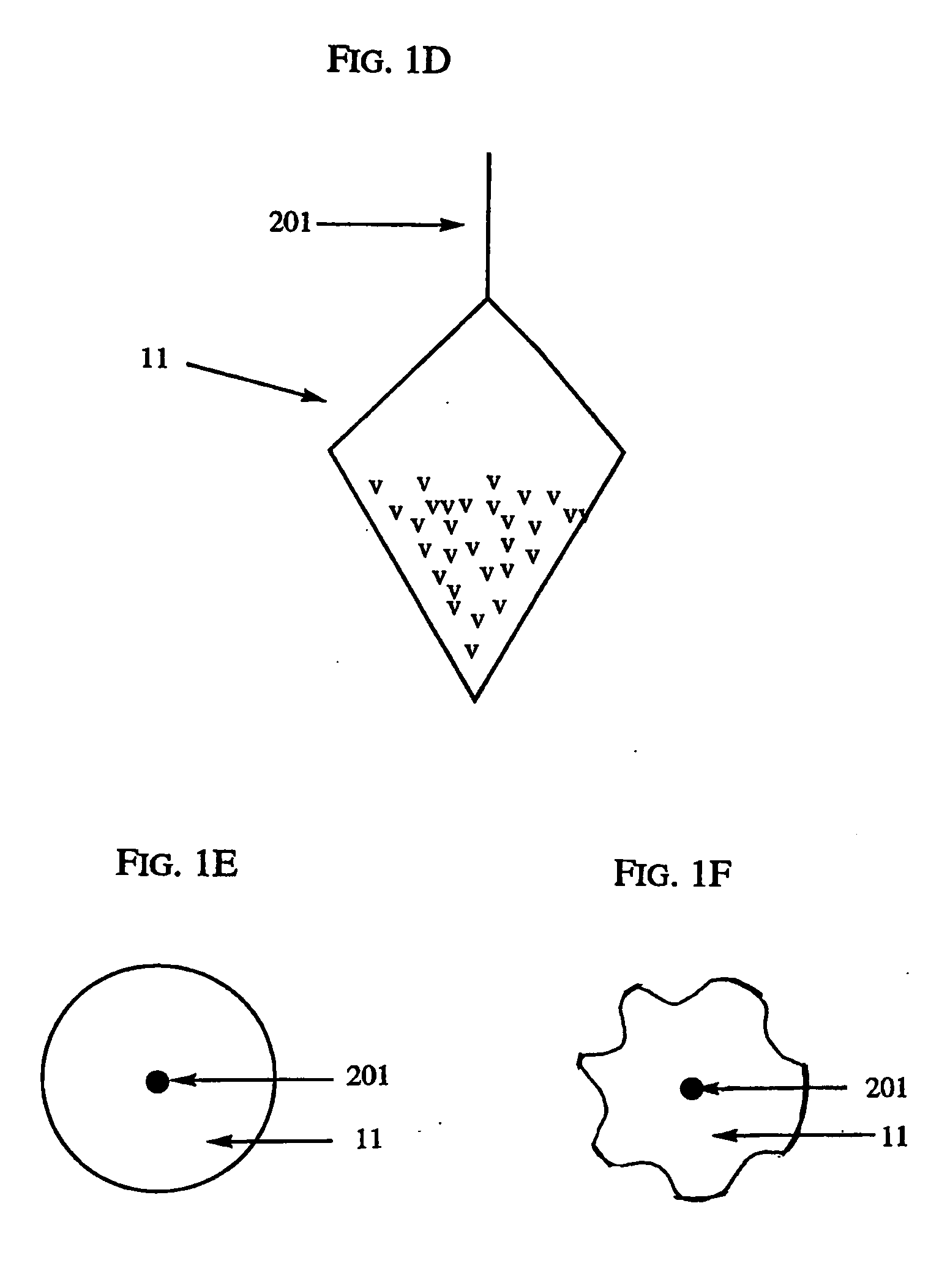Devices and methods to immobilize analytes of interest
a technology of immobilization and analytes, applied in the direction of chemical methods analysis, instruments, analysis using chemical indicators, etc., can solve the problems of unsatisfactory sample loss, target analyte loss, target analyte becoming trapped in filters, etc., to improve liquid sample processing, rapid and efficient immobilization of analytes, and high diffusion rate
- Summary
- Abstract
- Description
- Claims
- Application Information
AI Technical Summary
Benefits of technology
Problems solved by technology
Method used
Image
Examples
example 1
[0097] An array of multiple inserts will be prepared by dipping a three-dimensional polymeric body into a polymer coating solution. The polymer coating solution will be at a temperature slightly above the melting point of the polymer and the array of inserts will be dipped into the polymer coating solution for a period of time sufficient to coat the inserts. Thereafter, the array of inserts will be removed from the polymer coating solution and will be air dried.
[0098] Separately, a powder bath that will contain binding materials that can reversibly immobilize a analyte of interest will be prepared. For example, C1-8 alkyl ligands will be heat dried in a shallow dish at a temperature from about 80° C. to about 90° C. The array of inserts that have previously been coated with a polymer (e.g., polytetrafluoroethylene) will then be dipped / rolled in the powdered C18 alkyl ligands at a temperature where the polymer (e.g., polytetrafluoroethylene) softens so that the C18 alkyl ligands wil...
example 2
[0099] The method described in Example 1 will, in one embodiment, produce the insert array shown in FIG. 8. The insert array can have a primary connector 101 that holds the array of inserts 11, a handle 201 that connects each individual insert 11 to the primary connector 101, and binding materials v that cover at least a portion of the insert 11. The array of inserts will then be placed into housings (e.g., pipette tips) 20 as shown in FIG. 9. Thereafter, the connectors 201 will be cut so that the inserts 11 drop into the pipette tips 20. The pipette tips can then be released into a storage rack for packaging.
[0100] As shown in FIGS. 10A and 10B, the resulting pipette tip 20 will contain an insert 11, of which at least a portion is coated with binding materials v that will be capable of reversibly immobilizing a analyte of interest, and a cut secondary connector 201a. FIG. 10B, which is a top view of the pipette tip 20 shown in FIG. 10A shows that the insert 11 will not substantial...
example 3
[0102] This example demonstrates the use of insert arrays of the invention for producing analytes for analytical techniques, e.g., mass spectrometry, high performance liquid chromatography, electrophoresis and the like.
[0103]FIG. 11 shows an array 100 of inserts 11 of which at least a portion will be coated with binding materials v that will be capable of reversibly immobilizing an analyte of interest o. For example, the binding materials v can be chromatographic media, such as C18, and the analyte of interest o can be a peptide. Multiple inserts can be in the form of an array 100, where the array 100 is connected via structures 101 that will be manipulated for the experiment either automatically (e.g., through robotics) or manually. In alternative embodiments, the inserts can be within housings, such as those described herein and shown in FIGS. 9 and 10.
[0104] With reference to FIG. 11B, a housing 102 will hold a liquid sample 103 which will contain, inter alia, the analyte of in...
PUM
| Property | Measurement | Unit |
|---|---|---|
| volume | aaaaa | aaaaa |
| particle size | aaaaa | aaaaa |
| pressure | aaaaa | aaaaa |
Abstract
Description
Claims
Application Information
 Login to View More
Login to View More - R&D
- Intellectual Property
- Life Sciences
- Materials
- Tech Scout
- Unparalleled Data Quality
- Higher Quality Content
- 60% Fewer Hallucinations
Browse by: Latest US Patents, China's latest patents, Technical Efficacy Thesaurus, Application Domain, Technology Topic, Popular Technical Reports.
© 2025 PatSnap. All rights reserved.Legal|Privacy policy|Modern Slavery Act Transparency Statement|Sitemap|About US| Contact US: help@patsnap.com



